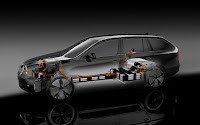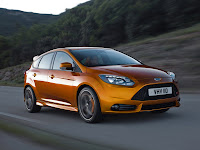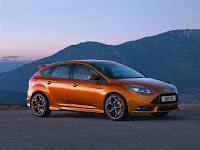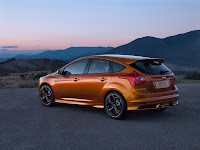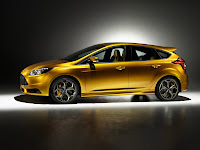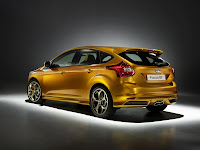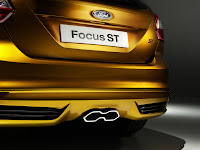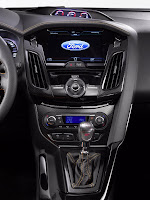South Africa might seem a strange place to launch a 200-mph exotic sports-GT car that will find owners mainly in the U.S. and western Europe. More so when you consider that the most significant achievement by an SLR model was in Italy, at the Mille Miglia event of 1955. But Mercedes-Benz has conducted operations in South Africa for more than 45 years, including complete vehicle assembly. More important, the weather in mid-November is fabulous.
Piloting these left-drive-only coupes in a right-hand-drive market took only a short adjustment, leaving us free to enjoy the SLR’s addictive power against the spectacularly scenic backdrop of the Cape mountains. The audio soundtrack wasn’t bad, either, with a muted but shrill scream of a twin-screw Lysholm blower accompanying a distinctly staccato roar from the 617-hp V-8’s side pipes every time the driver stabbed the pedal.
Each of the engine’s cylinder banks enjoys a stream of condensed intake air from separate intercoolers, together producing a torque curve quite similar to the profile of Cape Town’s Table Mountain. There is already 440 pound-feet of torque by 1500 rpm, and well over 500 pound-feet between 3000 and 5000 rpm. This lends mind-boggling elasticity to the SLR, with passing performance that has to be felt to be appreciated.
We’ve become fairly accustomed to huge output from AMG-built engines, but most of those are housed in conventional steel models weighing quite a bit more than the 3800-pound, carbon-fiber-bodied SLR. This isn’t exactly svelte when one considers that carbon fiber weighs half as much as steel. Mercedes claims 3.8 seconds for the 0-to-60-mph scramble, and we think that might be a conservative estimate.
The carbon-fiber structure, produced in an all-new facility in Working, England, is the real story of the SLR, and it celebrates the relationship between Mercedes-Benz and McLaren in the Formula 1 circus. Under McLaren’s management, this new plant conducts the high-tech assembly procedures that will give birth to 3500 examples of the SLR over the next seven years.
This carbon-fiber road car exploits that material’s amazing strength and feathery weight for high performance and safety. The entire body is a composite molding, with beautiful front and rear aluminum subframes bolted and bonded to the tub to mount the engine and undercarriage. Below the tub is a completely flat underbody.
When you flip open the long clamshell hood, it’s a surprise to see how little of the exposed interior is filled by the engine. For optimal weight distribution (the percentage, front to rear, is 51/49), the engine protrudes only two or so feet forward of the base of the windshield. Ahead of that is a monstrous snorkel reaching for cool air rushing in around the three-pointed star.
Other neat features visible under the hood are the forged-aluminum double control arms, along with an anti-roll bar mounted above the suspension and torqued by a Formula 1–style rocker assembly.
Piloting these left-drive-only coupes in a right-hand-drive market took only a short adjustment, leaving us free to enjoy the SLR’s addictive power against the spectacularly scenic backdrop of the Cape mountains. The audio soundtrack wasn’t bad, either, with a muted but shrill scream of a twin-screw Lysholm blower accompanying a distinctly staccato roar from the 617-hp V-8’s side pipes every time the driver stabbed the pedal.
Each of the engine’s cylinder banks enjoys a stream of condensed intake air from separate intercoolers, together producing a torque curve quite similar to the profile of Cape Town’s Table Mountain. There is already 440 pound-feet of torque by 1500 rpm, and well over 500 pound-feet between 3000 and 5000 rpm. This lends mind-boggling elasticity to the SLR, with passing performance that has to be felt to be appreciated.
We’ve become fairly accustomed to huge output from AMG-built engines, but most of those are housed in conventional steel models weighing quite a bit more than the 3800-pound, carbon-fiber-bodied SLR. This isn’t exactly svelte when one considers that carbon fiber weighs half as much as steel. Mercedes claims 3.8 seconds for the 0-to-60-mph scramble, and we think that might be a conservative estimate.
The carbon-fiber structure, produced in an all-new facility in Working, England, is the real story of the SLR, and it celebrates the relationship between Mercedes-Benz and McLaren in the Formula 1 circus. Under McLaren’s management, this new plant conducts the high-tech assembly procedures that will give birth to 3500 examples of the SLR over the next seven years.
This carbon-fiber road car exploits that material’s amazing strength and feathery weight for high performance and safety. The entire body is a composite molding, with beautiful front and rear aluminum subframes bolted and bonded to the tub to mount the engine and undercarriage. Below the tub is a completely flat underbody.
When you flip open the long clamshell hood, it’s a surprise to see how little of the exposed interior is filled by the engine. For optimal weight distribution (the percentage, front to rear, is 51/49), the engine protrudes only two or so feet forward of the base of the windshield. Ahead of that is a monstrous snorkel reaching for cool air rushing in around the three-pointed star.
Other neat features visible under the hood are the forged-aluminum double control arms, along with an anti-roll bar mounted above the suspension and torqued by a Formula 1–style rocker assembly.






















